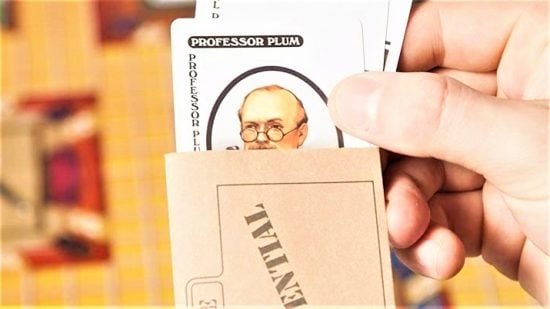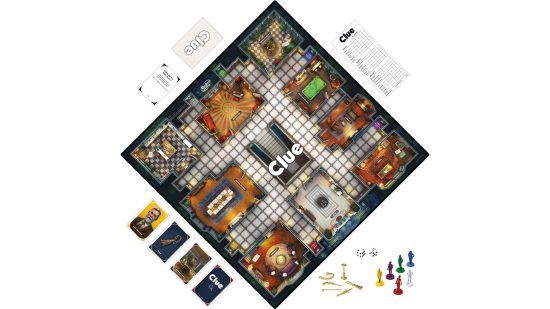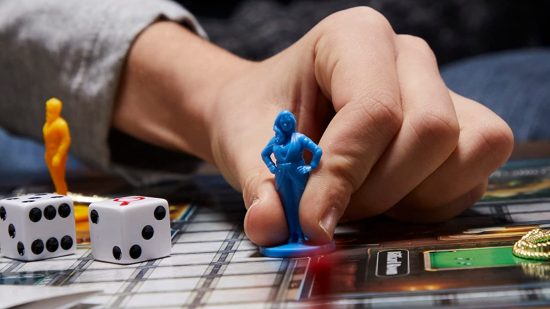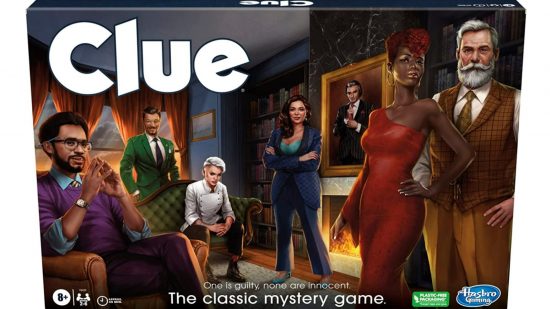Learning how to play Cluedo doesn’t have to be an unsolvable mystery. The classic 1949 board game is easy to learn and can be fun for all age groups. Sure, you might not have played a game in ages (or ever), but have hope. We can answer that big question – how do you play Clue – in no time.
While many of the best board games in our personal collections are complex strategy board games, we at Wargamer also love a classic board game. Cluedo was a family board game staple for us, so we’re happy to shed some light on how it plays. If we can teach you how to play chess and how to win Monopoly, we can help give you a Clue too.
When reading, bear in mind Cluedo was first published in 1949. This means there’s a lot of different editions, some of which introduce new or changed rules. We cover the core rules, gameplay, and strategy here, but be sure to check your individual copy for any variations.
Here’s everything you need to know about how to play Cluedo:
What is Cluedo?
Cluedo is a classic murder mystery game, with its players taking part in a grand ‘whodunnit’. Each player takes on the role of a suspect who must work to discover how the owner of the manor house they’re in was killed. Be the first to correctly guess the killer, the murder weapon, and the room the crime took place in, and you win the game.
In Clue, players take turns exploring the victim’s house. When you enter a room, you’ll make a guess for the three categories – weapon, room, and suspect. Players who can prove your guesses aren’t true must give you some information that contradicts your theory, so your guesses are vital for ruling factors out. Remember, this is a race to find out the true story behind the murder.

How many people can play Clue?
Clue is a board game for three to six players, with four or five players considered the optimum player count for the game. It can be turned into a two-player board game though (more on this later).
How long is a game of Cluedo?
The estimated length of a game of Cluedo is one hour. This can obviously vary (sometimes someone makes a really lucky guess), but an hour or less is the general estimate.
Cluedo setup
While different editions may add extras, here are the core Cluedo setup instructions:
Board and miniatures
First, unfold your Clue game board. Each suspect will have a named space, so place their miniature on the corresponding square. Regardless of how many players there are, all six minis should still be placed on the board.
Your copy of Cluedo will also include miniatures representing possible murder weapons. Place these in random room spaces, with each weapon in a separate room from the others.
Cards and sheets
Split the weapon, item, and suspect cards into separate decks. Shuffle each deck, and select one card from each without looking at it. These go in a special case file envelope and become the solution to the murder.
Next, shuffle the remaining weapon, item, and suspect cards together. Deal these out to the players.
In most versions of Clue, it doesn’t matter if some players end up with more cards than others, but you should still try to deal them out as evenly as possible. However, there are some editions where everyone gets the same amount of cards, and the rest are turned face-up – so once again, check your specific copy for variations.
Finally, make sure every player has a detective sheet (or a blank piece of paper if you don’t have any), as well as a pencil to write on it with. The cards each player has in their hand represent the suspects, rooms, and weapons they know weren’t involved in the murder, so the first thing everyone will want to do is cross their cards off on their sheets.
Cluedo rules
In older versions of Cluedo, the player controlling Miss Scarlet always goes first. However, many later editions now have players roll to determine the starting player. Whoever goes first, turns then pass clockwise to the next player.
Every turn in Cluedo starts with a player rolling two six-sided dice. This shows the maximum number of spaces they can move that turn.
There are a few rules about moving in Clue you should remember:
- You can move orthogonally (forwards, backwards, left and right) but not diagonally
- You can’t move through the same space twice
- You can’t move through other character minis
- You don’t need to use all of your movement
- Some rooms have secret passages which can be used instead of using your dice results
Once you enter a named room, you can make a guess about the murder. Your guess must include the room you’re in, but you can guess any weapon and suspect you want (including the one you’re playing). The minis representing your chosen weapon and suspect must be moved to your room.
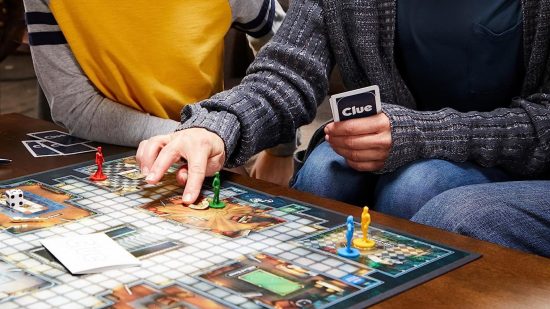
With the guess made, the player on your left must check their hand. If they’re holding a card representing any of the three guesses you made, they must show you one (though they get to choose which of the three it will be).
If they have none, the next player clockwise does the same thing. This continues until you have been shown a card by another player. Once you’ve seen a card, cross it off your detective sheet to remind you it can’t be part of the solution.
If you think you’ve solved the mystery, you can make an official guess on your turn. Some versions require you to move to a room at the center of the board, while others will let you guess on the spot. You’ll need to publicly declare your guess, then privately view the cards in the case file envelope.
Guess correctly, and you win the game! Get it wrong, and you’re out of the running – the cards go back in the envelope, and the remaining players continue without you. Some versions of Clue rule that no player wins if everyone guesses incorrectly, while others name the last player standing as the winner if everyone else got the solution wrong.

How to win Cluedo
To win Cluedo, you must be the first person to correctly solve the murder by guessing the suspect, weapon, and scene of the crime. But how do you get to this point? Here are some strategy tips:
If you get to choose your character, consider who you want to play as carefully. Older versions have a set turn order, and every edition will have certain characters placed closer to different rooms than others. The character you play could help you decide what you can deduce early on.
Movement is limited in Clue, so be sure to make use of the game’s secret passages. You can also use the guessing system to throw off other players – if you think your opponent is heading for the Conservatory, guessing that you saw them in a room on the other side of the room can really throw a spanner (or lead pipe, or candlestick) in the works.
The most important thing is to track everything. Don’t just mark proven information on your detective sheet – pay close attention to what guesses prompt certain players to show a card.
Even if you don’t know what’s in your opponent’s hands, you can narrow it down by watching closely. Plus, if everyone is asking to see the same suspect or weapon, there’s a higher chance it’s not in anyone’s hands.
Finally, don’t underestimate the power of limiting your guesses. Asking to see three cards you have no information on is great for broad gathering, but if you want to rule out specific cards, include cards from your own hand in your guess. It can also throw your opponents off, as they may not clock that you’re the one holding the rope you’re searching for.
How to play Cluedo with 2 players
When dealing out cards in a two-player game of Cluedo, deal four cards face-down to create a third hand that no player controls. If a player guesses a card their opponent doesn’t have during the game, the guesser can check one face-down card from the deck instead. These cards must be kept in the same order so you can check different cards (and gain different information) each time.
You should by this point know how to play Cluedo like a pro. For more puzzling content, here are the best escape room games to try. And if you really like Cluedo, here’s how we rank Cluedo characters by hotness.
